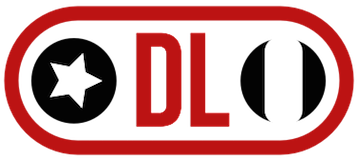The main feature here at DerbyListing.com is the list of roller derby leagues. It’s been quite a bit of work and a lot of fun to put this together. I hope you find it useful and enjoyable.
Using the List
A few tips on how to use the list. If you have any questions on usage, feel free to post them in the comments.
- Filtering: There is a filter box at the top of each column. The text you enter into a box will filter the list by that column.
- Example 1: if you want to see all of the “A“dult “W“omen’s leagues. Enter “A” in the AGES column, then Enter “W” in the GENDERS column.
- Example 2: Let’s say you want to see a list of all the roller derby teams in the Bío Bío region of Argentina. Enter “Argentina” in the COUNTRY column, then enter “Bío Bío” in the REGION column. Or you could skip filtering the country and just enter the region.
- Adding Leagues: If you know of a new league that isn’t on the list, you can click on the Add New League button. Enter the appropriate information in the boxes, then click the Submit button. The information will be verified and approved prior to appearance on the list.
- Updating Leagues: If you see something incorrect about a league, you can click on the league you want to edit, then click on the Edit Selected League button. Enter the appropriate information in the boxes, then click the Submit button. The information will be verified and approved prior to appearance on the list.
- To Report a league as inactive, click on the league you want to report as inactive, then click on the Edit Selected League button. Enter a date in the LEAGUE END DATE box, then click the Submit button.
- Exporting the List: Click on the Export List to Excel button and you will be prompted to save a file to your computer. This functionality does not work with Internet Explorer. If you want the file, I recommend using Chrome, Firefox, or Safari. If you filter the list prior to exporting, it will only export the filtered list.
Gathering the Data
I first started compiling this data because I was looking for an accurate count of roller derby leagues. The main resource at the time was a wonderful website that you may be familiar with… Derby Roster. I can’t count the number of times I referred to Derby Roster prior to putting together my own list.
I started to notice that some of the leagues listed were, in fact, disbanded. As I encountered more of the disbanded leagues, I decided to compile my own list.
I meticulously checked each league’s website or Facebook page to determine if they were still active. Once I had winnowed the list down to just the active ones, I set out to search for any other active leagues that might have been missed. I used data from several sites to help find missing leagues. Unfortunately, I kept encountering the same problem. Leagues that had disbanded, but that were listed as active.
Ultimately, I settled on using Google, Facebook, and country-specific lists to find new leagues. Even the country-specific lists had disbanded leagues listed.
Unfortunately, many lists are buried in Facebook groups or obscure blogs. (And if anyone knows of an accurate and up to date list for Mexico… I’m all ears.) As I gathered more of these resources, I felt confident that my list was the most up to date and accurate survey of roller derby leagues in the world.
Inactive Leagues
The final tricky bit is maintaining the list to weed out any leagues that have disbanded. Unfortunately, I can’t simply rely on leagues to inform everyone that they are no longer active. My current method relies heavily on Facebook.
Using the Facebook API, I check each leagues Facebook Page for the most recent post. If the post is within the last three months, the league is kept active. If the post is older than three months, I contact the league to see if they are still active. If there is no response, I assume the league is inactive. If there is a response, I use the information provided to determine whether the league is active.
There are some downsides to using Facebook for this. The main one is that not all leagues use Facebook. Additionally, there is a subset of leagues that are on Facebook but don’t have Facebook Pages. However, for the handful of leagues that don’t use Facebook Pages, it’s usually not too difficult to contact them directly for information.
I hope now that the list is up and running I will be able to crowdsource the data, but I’ll always fall back to the old tried true methods just to make sure.
Credits
Cover Photo: That super awesome photo comes to us from Chris Bojanower who is based in Utah.
Logo: That sweet, sweet logo comes to us from Taela Yaletchko who is a skater with Jet City.

